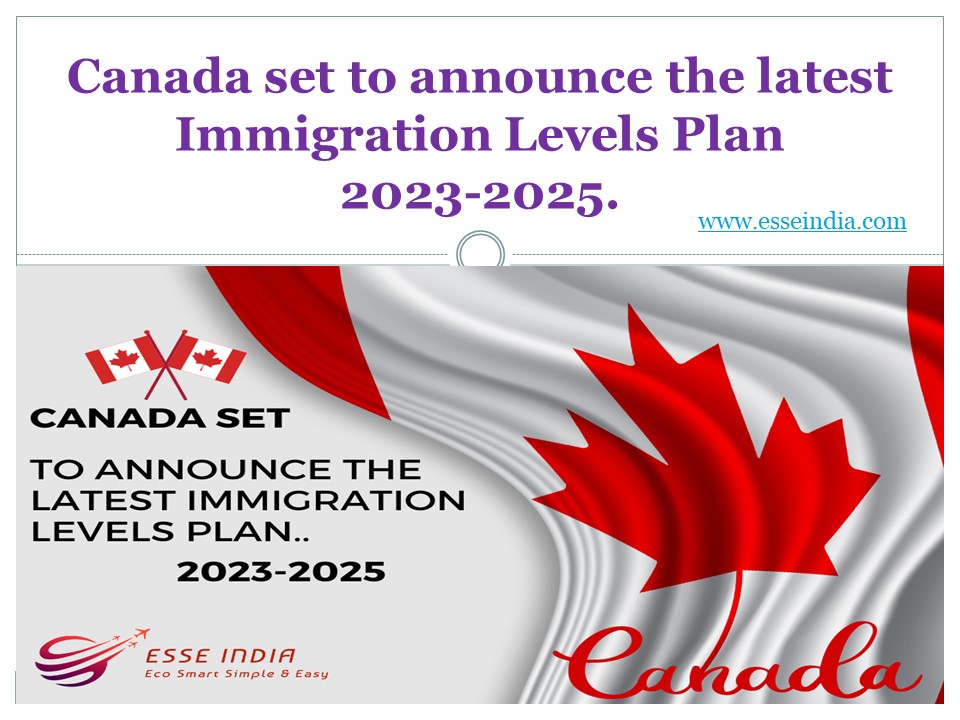Canada set to announce the latest Immigration Levels Plan 2023-2025 - PowerPoint PPT Presentation
Title:
Canada set to announce the latest Immigration Levels Plan 2023-2025
Description:
Each year, Immigration, Refugees and Citizenship Canada (IRCC) publishes an immigration level plan as a guide to how many immigrants are allowed to come to Canada each year. Includes immigration breakdowns for economy, family and humanitarian class plans for the next three years. This year, forecasts for 2023, 2024 and 2025 are shown. Under Canada's primary immigration law, the Immigration and Refugee Protection Act (IRPA), the government must issue this proclamation by November 1 each year. This is the second immigration level plan announced in 2022, first announced in February after the latest federal election on September 20, 2021. – PowerPoint PPT presentation
Number of Views:3
Title: Canada set to announce the latest Immigration Levels Plan 2023-2025
1
Canada set to announce the latest Immigration
Levels Plan 2023-2025.
www.esseindia.com
2
The Canadian government is expected to announce
the latest Immigration Levels Plan by November 1,
2022.
- Each year, Immigration, Refugees and Citizenship
Canada (IRCC) publishes an immigration level plan
as a guide to how many immigrants are allowed to
come to Canada each year. Includes immigration
breakdowns for economy, family and humanitarian
class plans for the next three years. This year,
forecasts for 2023, 2024 and 2025 are shown. - Under Canada's primary immigration law, the
Immigration and Refugee Protection Act (IRPA),
the government must issue this proclamation by
November 1 each year. This is the second
immigration level plan announced in 2022, first
announced in February after the latest federal
election on September 20, 2021.
3
Why are there two announcements this year?
- The plans for 2022-2024 were not announced until
February 2022, rather than the normally planned
November 1, 2021. - After the election, parliament will not reopen
until November 22, 2021, after which it will
remain open for only 19 days before the holiday.
In this case, IRPA requires plans to be announced
within 30 days of parliament's resumption. In
this case, Parliament resumes in mid-January
2022. - Now that Parliament is in full swing, the
government will proceed with releasing the newest
Immigration Levels Plan on its regular schedule.
4
The current Immigration Levels Plan
- Under the 2022-2024 Immigration Levels Plan,
Canada aims to welcome 431,645 new permanent
residents in all immigration categories in 2022. - As of 2022, Canada has welcomed more than 300,000
new permanent residents. Most of them are from
the economy class program. The economic class
immigration target for 2022 is 241,850, or about
60 of the total immigration. The 2022 plan also
covers 105,000 family migrants and 8,250 refugee
and humanitarian categories. - All of these targets are subject to change once
the new 2023-2025 Immigration Levels Plan is
released and will no longer be used as a
benchmark for IRCC's immigration targets. Under
the 2022-2024 Immigration Levels Plan, Canada
aims to welcome 431,645 new permanent residents
in all immigration categories in 2022. - As of 2022, Canada has welcomed more than 300,000
new permanent residents. Most of them are from
the economy class program. The economic class
immigration target for 2022 is 241,850, or about
60 of the total immigration. The 2022 plan also
covers 105,000 family migrants and 8,250 refugee
and humanitarian categories.
5
What to expect?
- Typically, the Immigration Levels Plan contains
new increases, and are currently at their highest
levels ever. For example, less than 10 years ago
the total target for 2016 was 250,000 immigrants.
In 2021, IRCC broke the record for the largest
number of permanent residents ever, totaling over
405,000 even during uncertainty brought by the
pandemic - The current overall target for 2023 is 447,055,
rising slightly to 451,000 by 2024. - IRCC will work with various other government
departments and stakeholders to develop a
balanced immigration level plan to allocate
permanent resident places in each subsequent
course or program. - Immigration Minister Sean Fraser told CIC News in
June that he would consult with states to better
understand their labour market needs. ). They
believe it is more appropriate to target skilled
immigrants needed to strengthen the workforce and
fill gaps in Canada's workforce.
6
- The minister also said he could foresee a target
of up to 500,000 new permanent residents a year
for the next few years, but he did not specify
when. - "Look, I didn't put it in my watch," he said. "I
think we're going to get there. We're adding more
than 1 percent of the population through our
existing pathways. That trajectory will continue.
I don't know what year, it's going to depend on
the needs of the community." - Based on data from IRCC, as of August 31, there
are 513, 923 applications for permanent residency
waiting to be processed. IRCC recently announced
that it was working to improve client services
and speed up processing time by hiring over 1,000
new employees, moving to a 100 digital
application process, and overall making
investments to modernize the aging technology
that the department relies on
7
Why is Canada welcoming more immigrants
- The Immigrant Levels Plan is developed by IRCC in
consultation with various government departments
to support IRCC's mission of welcoming and
assisting immigrants in economic development,
family reunification, and humanitarian
assistance. I'm. - Newcomers are especially important to the
Canadian economy because they contribute through
work and paying income tax. For example, these
taxes are designed to support infrastructure,
healthcare, education, pensions, and more.
Canada's population is aging, with baby boomers
born between 1946 and the early 1960s reaching
the retirement age of 65. More immigrants help
Canada maintain a high standard of living.
8
Thank you































